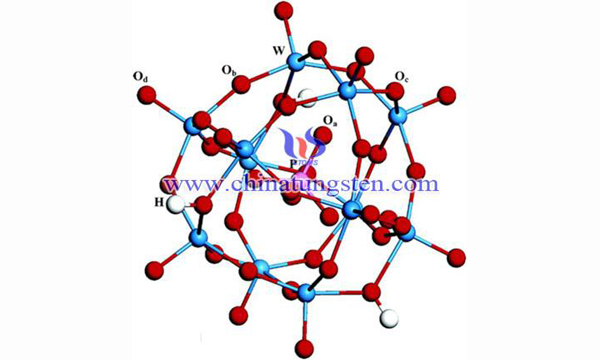Preparation of Loaded Phosphotungstic Tungsten Heteropoly Acid Catalyst
- Details
- Category: Tungsten Information
- Published on Saturday, 11 August 2018 19:06
Carboxylic ester is a kind of basic organic chemical raw material. It is applied to perfume, essence, resin, paint, cosmetics, medicine, surface active agent and so on. It has wide market demand at home and abroad. At present, organic acid and alcohol are used as raw materials, and concentrated sulfuric acid as catalyst. Concentrated sulfuric acid as an esterification catalyst has some disadvantages, such as corrosion equipment, environmental pollution, and so on. Therefore, replacing the traditional catalyst with solid catalyst has become an important field of catalytic research.

It is found that the combination of phosphotungstic acid H zeolite as an esterification catalyst has good thermal stability and it can be used to catalyze the esterification of acetic acid with n-butanol, isobutanol and ethanol, as well as the esterification of lactic acid with n-butyl alcohol, synthesis of n-butyl acetate and isobutyl acetate respectively. Ethyl acetate and n-butyl lactate, etc.
The preparation method of phosphotungstic tungsten heteropoly acid supported catalyst is as follows: the Keggin structure phosphotungstic acid is dissolved in deionized water, and the pretreated H beta zeolite is mixed with the above solution. The impregnated medium is deionized water. The liquid-solid ratio of the volume of the impregnated solvent and the mass of the carrier is 2 ~ 5ml/g, and the constant temperature constant pressure in the constant temperature oscillators And soaking for 12~24 hours, then heating and drying, heating up to 100~120°C in 8~12 hours, drying for 1~4 hours, and baking at 180~220°C for 1~4 hours and activating the catalyst. Before impregnation, H beta zeolite needs to be roasted for 1~4 hours at 350~450°C.
The above method can be applied directly to the esterification reaction as heterogeneous catalyst, the above obtained catalyst can be added into the strip of alumina binder, molding assistant, nitric acid and distilled water. After molding, it is dried. When drying at 100~120°C for 4~12h, it is then activated at 400~500°C for 2~6 hours. The obtained catalyst was used for continuous operation of fixed bed reactor.
- Tungsten Oxide Manufacturer & Supplier, Chinatungsten Online: www.tungsten-oxide.com
- Tungsten News & Prices of China Tungsten Industry Association: www.ctia.com.cn
- Molybdenum News & Price: news.molybdenum.com.cn
- Tel.: 86 592 5129696; Fax: 86 592 5129797; Email: sales@chinatungsten.com



 sales@chinatungsten.com
sales@chinatungsten.com